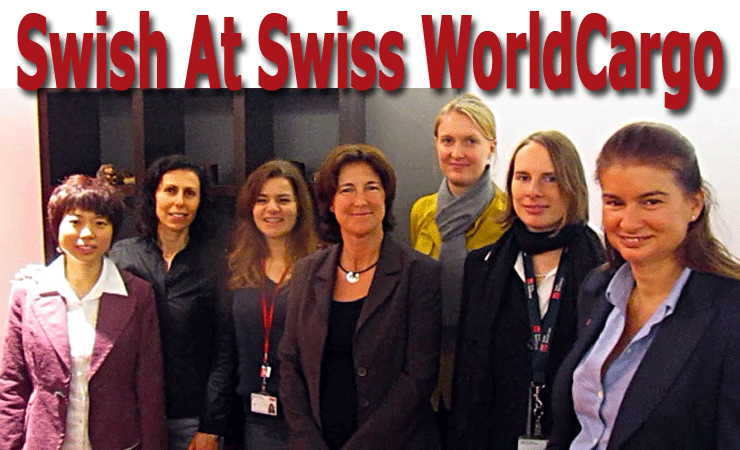|

 Air
Cargo Germany, based in Frankfurt am Main, one of the most organized,
pioneer industry groups in the world, kicked off its 2012 monthly meetings
(January) with a look ahead delivered by industry expert Dirk Steiger,
President of Aviainform, a consulting company that works for several
air cargo companies in Europe. Air
Cargo Germany, based in Frankfurt am Main, one of the most organized,
pioneer industry groups in the world, kicked off its 2012 monthly meetings
(January) with a look ahead delivered by industry expert Dirk Steiger,
President of Aviainform, a consulting company that works for several
air cargo companies in Europe.
Mr. Steiger outlined a view to what’s
new and next as this year unfolds.
The performance and extreme volatility
of global markets in 2011 were specific examples of increasing irrationality
when comparing various stock, bond, currency, and derivate market volumes
to global GDP. The latter was cited as 80 billion USD, whereas the US
GDP alone was 14.58 trillion USD in 2010, but the point was to illustrate
the out-of-kilter ratio of financial markets vis-à-vis real production.
Dirk Steiger also touched on the issue
of national debt, which is now a daily fact of life having risen at
alarming levels in the industrialized world; Japan and Greece lead the
over 100 percent of GDP league, the U.S., Ireland and Portugal are just
a fraction below the 100 percent high water mark, followed by Austria
and Germany at 10 percentage points lower, and lonely Sweden stands
as the only country at 40 percent—the shining star.
For aviation, Mr. Steiger noted that the
strong, ongoing fluctuations in oil prices and the accompanying fuel
surcharges were at record levels through the last three quarters of
2011.
Speaking to the Frankfurt air cargo community,
which is now in the unaccustomed role of living with a night ban on
flights, Dirk Steiger also pointed out that the only two German airports
left without a night curfew were CGN and HHN.
Other major gateways living under the
ban now include FRA, MUC, DUS, BBI, HAM and LEJ with various degrees
of restrictions, Dirk Steiger said.
But as he pointed out, there are no such
flight bans at AMS, BRU, or CDG, nor are there signs of citizen rage
over airport noise.
Looking ahead at what has already become
a hot button topic this year, Dirk Steiger posed the question of whether
there is a future for all-cargo airlines with the recent trials of Cargoitalia
and Jade in the news.
While discussing the subject in some detail,
several key sources for information were listed, including Airbus, Boeing,
and IATA. Detailed charts referenced these sources expressed in FTK.
Thinking about it is intriguing, because,
indeed, load factors and FTK are usually present in the big scheme of
revenue management, yet profitability and CRM-based measurements are
far more meaningful and critical to a carrier’s bottom line.
As an example, a flight with 100 percent
load factor up to maximum takeoff weight is neither a guarantee nor
an indication of the revenue picture.
In fact, a lower load factor with the
highest yielding cargo is far more profitable.
Better yield also contributes to burning
less fuel.
In 2012, just look at the number of airlines
that have instituted global account management whereby a large multinational
customer is seen by the value of its total contribution rather than
strictly O/D (origin/destination).
Otherwise the Avianinform freight market
outlook went all the way out to 2036, with some rather sharp swings
in most global markets projected for certain commodities during the
period 2025-2027.
How much that reveals about how 2012 will
turn out is anybody’s guess.
Recent conversations with a few cargo
chiefs that FlyingTypers has conducted converged on this year’s
promise and how to keep results at no worse than 2011.
The size of the cargo pie is finite; the
battle is for how to win, maintain and grow one’s share of it.
Ted Braun |





